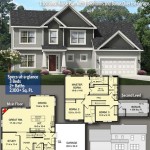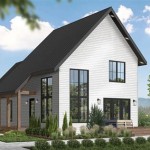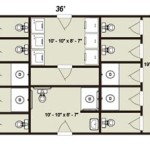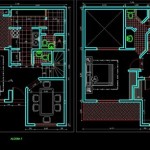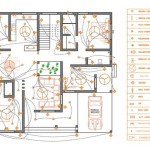Floor Plans For Old Farmhouses: Preserving History, Embracing Modern Living
Old farmhouses, with their weathered exteriors and rich histories, hold a unique appeal. Their floor plans, however, often present a challenge to modern homeowners seeking comfortable and functional living spaces. Understanding the typical layouts of these historic homes and exploring strategies for adaptation is crucial for successful renovation and preservation.
Farmhouse architecture evolved organically, reflecting the needs and resources of rural communities. These homes were typically built incrementally, with additions and modifications made over generations. This resulted in floor plans that, while charming, can lack the flow and amenities expected in contemporary residences. Common issues include small, compartmentalized rooms, inadequate natural light, and a lack of connection to the outdoors.
Successfully navigating the complexities of farmhouse floor plans requires a careful balance between preserving the home's historical character and accommodating modern living requirements. Prioritizing functionality, flow, and natural light while respecting the original architectural features is key to creating a harmonious and livable space. This often involves thoughtful remodeling, repurposing existing spaces, and strategically incorporating modern amenities.
Key Point 1: Understanding Common Farmhouse Floor Plan Characteristics
To effectively address the challenges of renovating an old farmhouse, it is essential to understand the typical floor plan characteristics. These characteristics often stem from the practical needs of farm families and the limited resources available during their construction.
One common feature is the presence of a central chimney. This chimney served as the primary source of heat for the entire house, often with fireplaces in multiple rooms. The location of the chimney influenced the layout of rooms, with living spaces typically clustered around it for warmth. Removing or significantly altering a central chimney can be a complex and costly undertaking, so preserving it and integrating it into the new design is often the preferred approach.
Another characteristic is the compartmentalized layout. Farmhouses were often built with small, separate rooms to conserve heat and provide privacy for different family members. These rooms frequently included a parlor for receiving guests, a kitchen for cooking and food preparation, and bedrooms on the upper floors. The lack of open-plan living created challenges for modern families seeking a more connected and social living environment. Combining smaller rooms or creating strategic openings between them can improve flow and create a more spacious feel.
The importance of a functional kitchen was paramount. The kitchen in an old farmhouse was more than just a place to cook; it was often the heart of the home, where meals were prepared, food was preserved, and family gathered. Original farmhouse kitchens often featured large fireplaces, wood-burning stoves, and ample storage space for food and utensils. When renovating a farmhouse kitchen, it is important to respect its historical significance while incorporating modern appliances and conveniences. Preserving original features like exposed beams, brick walls, or antique cabinetry can add character and charm to the space.
Farmhouses often included a back kitchen or summer kitchen. This separate kitchen was used during the warmer months to prevent the main kitchen from overheating the house. Summer kitchens often featured simple construction and were designed for practicality rather than aesthetics. When renovating an old farmhouse, the summer kitchen can be repurposed as a mudroom, laundry room, or additional storage space.
Entryways in old farmhouses were typically functional rather than grand. They served as a transition space between the outdoors and the indoors and often included a mudroom or porch for removing dirty shoes and coats. Original entryways were frequently small and lacked storage space, presenting a challenge for modern families. Enlarging the entryway or adding storage solutions can improve functionality and create a more welcoming entrance.
Upstairs spaces in old farmhouses were usually reserved for bedrooms. These bedrooms were typically small and lacked closets, as clothing was often stored in chests or wardrobes. Adding closets to bedrooms can be a challenging undertaking, particularly in older homes with limited space and existing structural considerations. Creating built-in closets or repurposing adjacent spaces can provide much-needed storage without compromising the historical character of the home. Dormer windows were often used to provide natural light and ventilation to upstairs bedrooms, and preserving these features can enhance the charm and character of the space.
Key Point 2: Adapting Farmhouse Floor Plans for Modern Living
Successfully adapting a farmhouse floor plan for modern living requires a thoughtful and strategic approach. Prioritizing functionality, flow, and natural light is crucial, while respecting the home's historical character and architectural integrity.
One common approach is to create a more open-plan living space. Combining smaller rooms like the kitchen, dining room, and living room can improve flow and create a more spacious and sociable environment. This can involve removing walls or creating strategic openings to connect different areas. When removing walls, it is essential to consult with a structural engineer to ensure that the building's integrity is not compromised. Supporting beams may be necessary to replace load-bearing walls, but these beams can be incorporated into the design as a decorative feature.
Another strategy is to improve the connection to the outdoors. Farmhouses were often designed with limited access to outdoor spaces. Adding french doors, sliding glass doors, or a large deck can create a seamless transition between the indoors and outdoors. This can enhance natural light, ventilation, and the overall enjoyment of the property. Careful consideration should be given to the style and materials used for the doors and deck to ensure that they complement the historical character of the farmhouse. Using reclaimed wood or traditional building techniques can help to maintain the home's authenticity.
Adding or expanding bathrooms is often a high priority for modern homeowners. Original farmhouses often had limited or no indoor plumbing, and bathrooms were typically small and lacking in amenities. Creating larger, more luxurious bathrooms can greatly enhance the comfort and functionality of the home. This may involve repurposing existing spaces or adding new additions to the building. When adding bathrooms, it is important to consider the placement of plumbing and electrical systems to minimize disruption to the existing structure.
Improving natural light is another key consideration. Farmhouses were often built with small windows to conserve heat, resulting in dark and gloomy interiors. Replacing windows with larger, more energy-efficient models can significantly improve natural light and ventilation. Skylights can also be added to bring natural light into areas that lack windows. Careful consideration should be given to the style and placement of windows and skylights to ensure that they complement the historical character of the farmhouse. Using historically accurate window styles and materials can help to maintain the home's authenticity.
Incorporating modern amenities without compromising the historical character of the home is a delicate balancing act. This may involve concealing modern appliances behind antique cabinetry or using traditional building techniques to create new features. For example, underfloor heating can be installed to provide modern comfort without the need for unsightly radiators. Similarly, smart home technology can be integrated into the home without being visually obtrusive. The key is to carefully consider the design and placement of modern amenities to ensure that they seamlessly blend with the historical character of the farmhouse.
Key Point 3: Considerations for Preserving Historical Character
Successfully renovating an old farmhouse involves more than just updating the floor plan; it requires a commitment to preserving the home's historical character. This involves understanding the original architectural style, materials, and construction techniques and making informed decisions about what to preserve and what to update.
One important consideration is the preservation of original architectural features. This may include exposed beams, brick walls, original flooring, and antique cabinetry. These features are an integral part of the home's history and should be preserved whenever possible. Repairing and restoring these features can be a rewarding process that adds character and charm to the space.
Another consideration is the use of historically appropriate materials. When replacing or adding features, it is important to use materials that are consistent with the original architectural style of the farmhouse. This may involve using reclaimed wood, antique hardware, or traditional building techniques. Sourcing these materials can be a challenging undertaking, but the results will be well worth the effort. Using historically appropriate materials will help to maintain the home's authenticity and ensure that it blends seamlessly with its surroundings.
Preserving the original layout of the farmhouse is another important consideration. While it may be tempting to completely gut the interior and create a modern open-plan living space, this can detract from the home's historical character. Instead, consider making subtle changes to the layout that improve functionality without sacrificing the original design. This may involve creating strategic openings between rooms or repurposing existing spaces.
Maintaining the exterior appearance of the farmhouse is also crucial. This involves preserving the original siding, windows, doors, and roofline. Repairing and restoring these features can be a challenging undertaking, but it is essential for maintaining the home's historical character. When replacing features, it is important to use materials and styles that are consistent with the original design. For example, replacing original wood siding with vinyl siding would be a significant departure from the home's historical character.
Consulting with historical preservation experts can be invaluable when renovating an old farmhouse. These experts can provide guidance on the best practices for preserving historical features and navigating the complexities of local building codes and regulations. They can also help to identify historically significant features of the home that should be preserved. Working with historical preservation experts can ensure that the renovation is done in a way that respects the home's history and architectural integrity.
Renovating an old farmhouse is a unique and rewarding experience. By understanding the common characteristics of farmhouse floor plans, adapting them for modern living, and preserving the home's historical character, homeowners can create a space that is both functional and beautiful, while honoring the past.

1900s Farmhouse Plans Victorian House Floor

3 1916 Farmhouse Note Only One Bathroom In The Entire House It Can Be Done Floor Plans Country Style Vintage

Favorite Farmhouse Plans With Porches Old Salt Farm

New House Floor Plans Old Charm

Our Farmhouse Renovation Modernizing The Floor Plan

Google Image Result For Http Www Oconnorhomesinc Com Wp Content Uploads 2024 07 Traditional Farmhouse Floor Plans Old House Blueprints

11 Amazing Rustic Farmhouse Plans For Tight Budget Craft Mart

Favorite Farmhouse Plans With Porches Old Salt Farm

25 Gorgeous Farmhouse Plans For Your Dream Homestead House

7 Gorgeously Old Fashioned Farmhouse Plans
Related Posts

